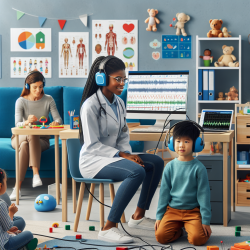Introduction
The transition to online environments for speech-language pathology has been accelerated by the COVID-19 pandemic, creating a pressing need to assess the efficacy of telehealth interventions, particularly for conditions like Childhood Apraxia of Speech (CAS). This blog examines current research on the effectiveness of telehealth for CAS, aiming to provide insights and guidance for clinicians and caregivers navigating this new landscape.
Understanding Childhood Apraxia of Speech
Childhood Apraxia of Speech (CAS) is a complex speech sound disorder characterized by inconsistent speech errors, difficulties in coarticulation, and inappropriate prosody. It requires specialized assessment and intensive training for effective management. The sudden shift to telehealth has posed additional challenges for delivering effective interventions for CAS.
Research Insights: Efficacy of Telehealth for CAS
In a recent review, two studies were identified that explored the efficacy of telehealth interventions for CAS. A phase I study assessed the Rapid Syllable Transition (ReST) treatment delivered via telehealth, showing promising outcomes in terms of target acquisition and generalization. The second study evaluated a novel tablet-based system for administering the Nuffield Dyspraxia Program-Third Edition (NDP3), indicating potential benefits with reduced clinician contact.
Challenges and Considerations
While the initial findings are encouraging, the evidence is limited and considered low-level. Both studies included in-person components, limiting the generalizability of results to fully remote settings. Moreover, the effectiveness of sensory-motor approaches heavily reliant on tactile and gestural cues may be reduced in telehealth formats.
Implications for Practice
Despite the limitations, telehealth offers a viable option for continuing CAS therapy, especially with methods like ReST that are more adaptable to online formats. Clinicians are encouraged to explore these options while remaining aware of the need for further research to establish robust evidence for telehealth interventions.
Conclusion
The current landscape of telehealth for CAS is marked by promising yet limited evidence. The transition to online therapy presents both challenges and opportunities, highlighting the need for continued research to optimize telehealth interventions. Clinicians and caregivers should remain informed and adaptive as they navigate this evolving field.
For more information, please follow this link.










